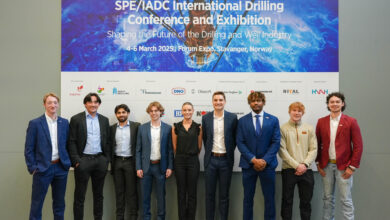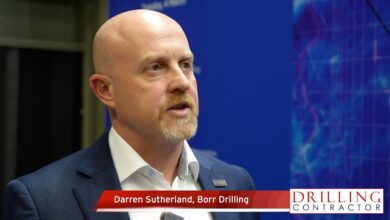Technical Session 9 – Lost Circulation & Wellbore Strengthening
Editor’s note: These abstracts have been edited for space and clarity. This program is current as of 15 January 2013. Additions, withdrawals and other changes to the conference program after this date may not be reflected. Click here for the most updated program.
TECHNICAL SESSION 9: LOST CIRCULATION AND WELLBORE STRENGTHENING
SPE/IADC 163481
Practical Guide to Lost Returns Treatment Selection Based on a Holistic Model of the State of the Near Wellbore Stresses, R.D. Duffadar, F.E. Dupriest, S.C. Zeilinger, Exxon Mobil Corp
This paper presents a holistic model describing the relationship between the various common lost returns treatments, the degree to which each is capable of maintaining or enhancing borehole integrity, and corresponding methodology for selecting the appropriate treatments for given situations.
SPE/IADC 163512
On the Shear Degradation of Lost Circulation Materials, P. Valsecchi, S.C. Zeilinger, Exxon Mobil Corp
In the present paper, a harder look is taken on the very concept of “shear degradation” and on its effectiveness in capturing the progressive size reduction of lost circulation material during circulation. Using dimensional analysis, the tendency of a material to degrade can be determined in advance. Density of the particles and suspending fluid, size of particles and fluid viscosity are examined and understanding the underlying physics enables the selection of a more shear-resistant engineered-particle drilling fluid, regardless of its application.
SPE/IADC 163434
Wellbore Strengthening – Nano-Particle Drilling Fluid Experimental Design Using Hydraulic Fracture Apparatus, C.O. Nwaoji, G. Hareland, University of Calgary; M. Husein, University of Calgary Library – Swets; R. Nygaard, Missouri University of Science and Tech; M.F. Zakaria, University of Calgary
This paper introduces a novel LCM drilling fluid blend, which has been used successfully in the laboratory to achieve very impressive wellbore strengthening results in both permeable and impermeable formations for both water-based and invert emulsion- (diesel oil) based mud.
SPE/IADC 163514
Numerical and Analytical Investigation of Smearing Effect in Casing Drilling Technology: Implications for Enhancing Wellbore Integrity and Hole Cleaning, S. Salehi, University of Louisiana; J. Mgboji, TESCO Corp; A. Aladasani, Kuwait Oil
This paper presents numerical and analytical models to optimize the parameters in casing drilling applications. Advance finite-element methods has been used to model the near wellbore area with considering various pipe/open-hole ratio and filter cake penetration in each simulation. The models will consider geomechanical, poro-elastic parameters of the formations, which are coupled with hydraulic model to consider drilling fluids properties. Analytical models were used to investigate the RPM, rotation mode and boundary conditions for the contact between casing and filter cake.
E-POSTER:
SPE/IADC 163486
Analytical Model to Characterize “Smear Effect” Observed While Drilling with Casing, A. Kumar, University of Houston; R. Samuel, Halliburton
This study analyzes the theory behind the phenomenon of the smear effect mechanism using case studies and existing literature and proposes an analytical model to estimate the improvement in fracture gradient based on the drilling parameters and reservoir properties. The formation of the smear zone is addressed by broadly classifying this mechanism into four steps and modelling their contribution to the smear effect.




